
Everything in this slideshow
-
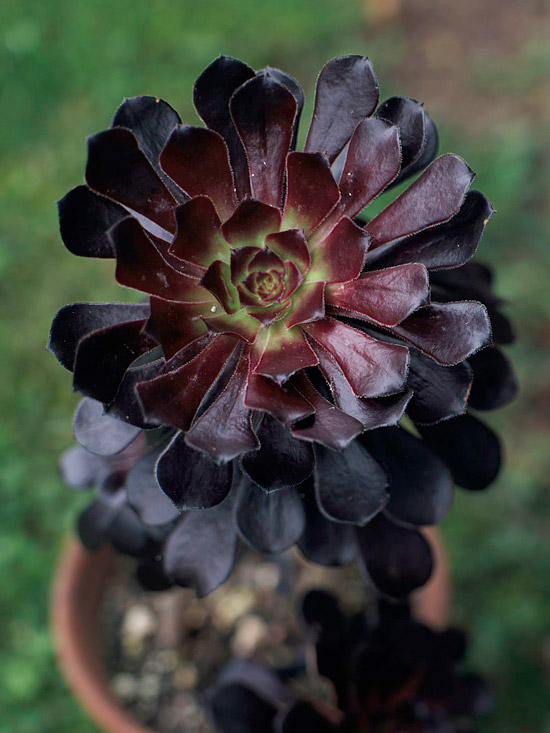
Aeonium
Also sometimes called pinwheel plant for the arrangement of its leaves on shrubby upright stems, aeonium adds height to a trough garden. This native of the Canary Islands and Morocco thrives in dry, sunny conditions.
Name: Aeonium spp.
Size: 6-20 inches tall and wide
Zones: 10-11
Top Picks: Zwartkop pinwheel plant (A. arboreum ‘Zwartkop’) has purplish black leaves at the tips of 2-foot-tall woody stems.
Kiwi aeonium (A. haworthii ‘Kiwi’) has medium green leaves edged in red and gold. It is sometimes sold as ‘Tricolor’.
-
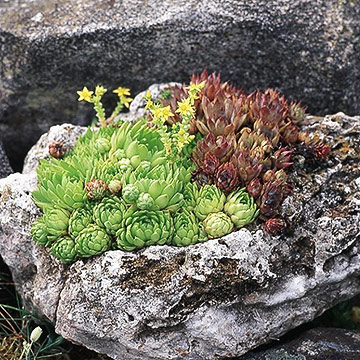
Hen-and-Chicks
Hen-and-chicks is a tough succulent groundcover that slowly spreads by producing offsets. It’s well suited for growing in trough gardens because of its shallow root system. It also grows well in cracks and crevices in rocks or as part of a green roof garden. Pink or yellow flower stalks rise to a foot above the foliage.
Name: Sempervivum spp.
Size: 3-6 inches tall and wide
Zones: 4-8
Top Picks: Common hen-and-chicks (S. tectorum) comes in many outstanding cultivars with colors ranging from blue green to the fiery-red ‘Sunset’.
Cobweb hen-and-chicks (S. arachnoideum) gets its name from the mat of white hairs that covers its leaves.
Hairy hen-and-chicks (S. ciliosum) also has white hairs covering its stiff, densely packed leaves.
Octopus hen-and-chicks (S. octopodes) develops offsets at the end of runners several inches long, which makes it resemble the arms of an octopus.
- Learn more about hen-and-chicks.
-
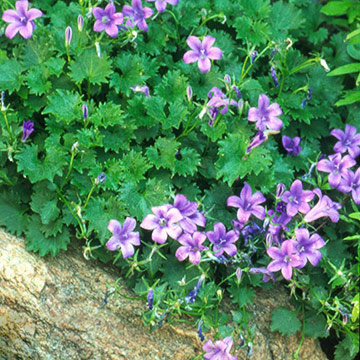
Bellflower
There are hundreds of species of bellflowers available, but the low-growing clumping kinds are best suited for trough gardens. They bear blue or white dainty bell-shape blooms.
Name: Campanula spp.
Size: 4-12 inches tall; 4-24 inches wide
Zones: 4-7
Top Picks: Blue Clips Carpathian bellflower (C. carpatica ‘Blue Clips’) and its sister variety ‘White Clips’ are clump formers that bloom much of the summer with upturned cup-shape flowers.
Fairies thimbles (C. cochleariifolia) is a slowly spreading creeper with dangling white, blue, or lavender flowers.
Dalmatian bellflower (C. portenschlagiana) bears bluish-purple blooms in early summer on a tidy groundcover plant.
Birch Hybrid campanula (C. ‘Birch Hybrid’) blooms all summer long if deadheaded.
- Learn more about bellflowers.
-
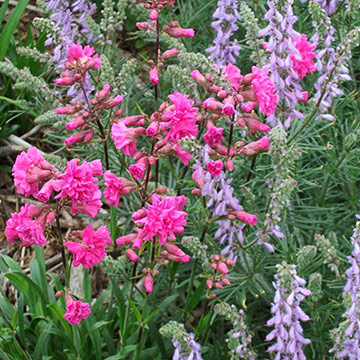
Catchfly
German catchfly is named for its sticky stems, which sometimes trap or catch small insects. It’s a late-spring bloomer with hot pink blooms. This plant loves a hot, dry site.
Name: Lychnis viscaria
Size: 12-18 inches tall and wide
Zones: 4-8
Top Picks: ‘Splendens Plena’ is a double-flowered form that’s evergreen in warm climates.
- Learn more about other catchfly species.
-
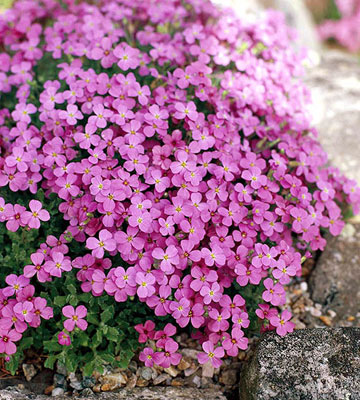
Purple Rock Cress
Purple rock cress is a creeping groundcover that looks lovely trailing over rocks or the edges of a trough garden. Most varieties have pink or purple flowers in spring.
Name: Aubrieta deltoidea
Size: 2-8 inches tall; 4-24 inches wide
Zones: 5-7
Top Picks: ‘Bressingham Pink’ has double pink flowers.
‘Royal Velvet’ bears large purple blooms.
‘Hartswood Purple’ produces violet flowers.
- Read more about purple rock cress.
-

Basket-of-Gold
Sometimes called cloth of gold and gold dust for its cloak of brilliant yellow flowers in spring, basket-of-gold needs good drainage, but doesn’t withstand heat well. Its gray-green foliage is attractive even after flowers have faded.
Name: Aurinia saxatilis
Size: 6-15 inches tall; 12-18 inches wide
Zones: 3-7
Top Picks: ‘Citrina’ bears lemon yellow flowers.
‘Compacta’ is a semidwarf form that remains under 10 inches tall.
- Read more about basket-of-gold.
-
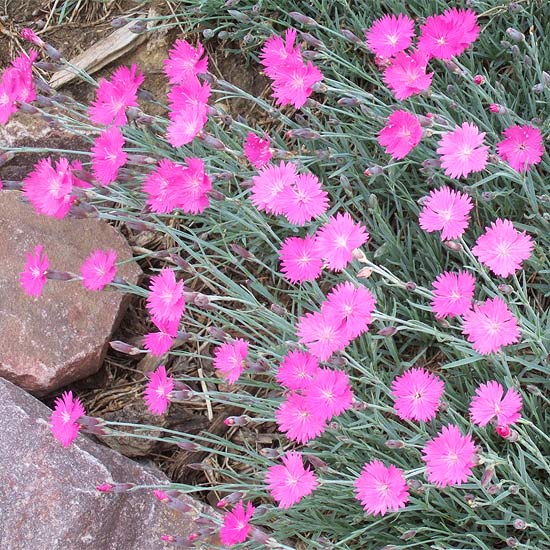
Dianthus
Dianthus is popular in cottage gardens because of its grassy blue-green foliage and pink, red, or white blooms with spicy clovelike fragrance. Look for compact forms and creeping groundcover types for trough gardens.
Name: Dianthus spp.
Size: 4-18 inches tall and wide
Zones: 3-10
Top Picks: Firewitch dianthus (D. gratianopolitanus ‘Firewitch’) bears magenta-pink blooms in spring, with sporadic rebloom in late summer on plants that reach 15 inches tall.
Tiny Rubies dianthus (D. gratianopolitanus ‘Tiny Rubies’) grows 4 inches tall and has deep pink diminutive blooms.
La Bourboule Pink dianthus (D. gratianopolitanus ‘La Bourboule Pink’) looks similar, with compact foliage less than 2 inches tall but with slightly larger pink blooms.
Arctic Fire dianthus (D. deltoides ‘Arctic Fire’) is a mat-forming groundcover with white flowers marked in red and pink.
- Learn more about dianthus.
-
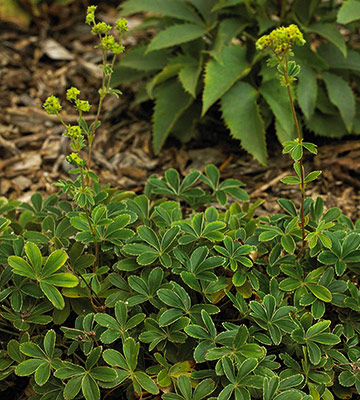
Alpine Lady’s Mantle
Alpine lady’s mantle is a smaller cousin of regular lady’s mantle. Like its larger relative, it bears clusters of yellow-green flowers in summer. Its matlike foliage is deep green above and silvery underneath. Silver hairs on leaf undersides often extend beyond the leaf edges, giving the leaves the illusion of being edged in silver.
Name: Alchemilla alpina
Size: 3-5 inches tall; 4-18 inches wide
Zones: 3-7
- Read more about lady’s mantle.
-
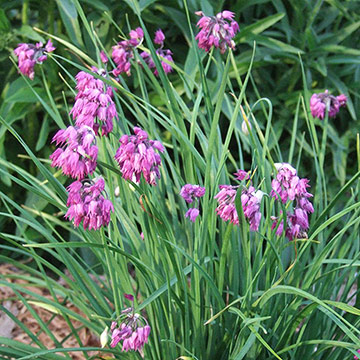
Flowering Onion
Of the many species and varieties of flowering onions, the small types with foliage that grows all summer long are the most suitable for trough gardens. Most bloom for several weeks, but earn their place in the garden with blue-green straplike leaves the rest of the year.
Name: Allium spp.
Size: 6-12 inches tall and wide
Zones: 4-8
Top Picks: A. cyathophorum var. farreri has thin, grassy green foliage and develops loose clusters of nodding purple flowers in early summer on plants 1 foot tall.
Millenium allium (A. ‘Millenium’) offers gray-green foliage to 1 foot tall and 2-inch-diameter balls of lavender flowers in late summer.
- Read about other alliums.
-
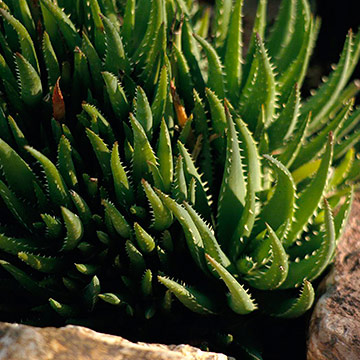
Aloe
Aloes are succulents with clump-forming rosettes. They gradually spread by sending up offsets near the base of the plant. The smaller species, which remain under a foot tall, work well in the well-drained and often dry conditions of trough gardens.
Name: Aloe spp.
Size: 2-12 inches tall and wide
Zones: 10-11
Top Picks: Torch plant (A. aristata) forms a dense clump of lance-shape leaves with toothed edges and bands of soft white spines. It grows only 5 inches tall.
Hayworth aloe (A. hayworthioides) has warty gray-green leaves, reaching just 3 inches tall.
Partridge-breast aloe (A. variegata) has deep green v-shape leaves splashed with bands of silvery white. It grows up to 1 foot tall.
-
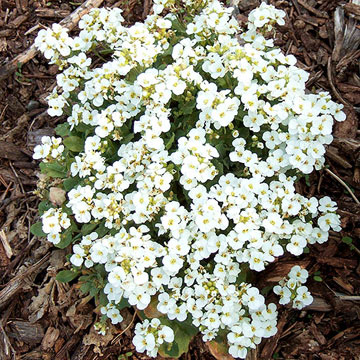
Wall Rock Cress
The most common form of wall rock cress (Arabis caucasica) can overtake a trough garden with its spreading growth. Choose less vigorous types to prevent the problem. Forms are available with either white or pink to lavender blooms in spring.
Name: Arabis spp.
Size: 4-6 inches tall; 4-12 inches wide
Zones: 4-7
Top Picks: Variegated wall rock cress (A. caucasica ‘Variegata’) is a mat-former with white flowers in spring and green foliage with yellowish leaf margins. It is slightly less vigorous than the plain species.
Spring Charm rock cress (A. blepharophylla ‘Spring Charm’) has loose rosettes of green leaves and produces pinkish-purple blooms in spring.
- Learn more about wall rock cress.
-
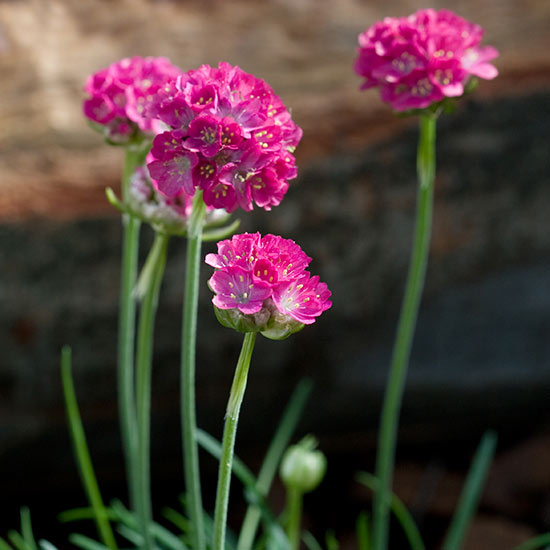
Thrift
Thrift develops tufted plants bearing round, papery flower heads several inches above the grassy foliage. Flowers may be white, pink, or rosy red. The plants grow best in gritty, well-drained soil.
Name: Armeria spp.
Size: 2-8 inches tall and wide
Zones: 3-9
Top Picks: Sea thrift (A. maritima) features grassy foliage and 8-inch stems topped with flowers; it is the most widely available species.
‘Alba’ has white flowers.
‘Ruby Glow’ shows off deep pink blooms.
‘Dusseldorf Pride’ bears rose pink blossoms.
Juniper-leaved thrift (A. juniperifolia) forms a tight hummock of spiny green leaves only 2 inches tall.
- Read about thrift.
-
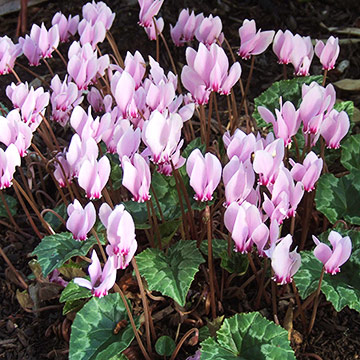
Hardy Cyclamen
Hardy cyclamen are miniature versions of the florist’s cyclamen. They have beautiful leaves, often marked with silver bands or splotches. Flowers may be pink, white, or rosy red. Petals flare upward from a nodding central mouth.
Name: Cyclamen spp.
Size: 2-5 inches tall and wide
Zones: 5-9
Top Picks: C. hederifolium has ivy-shape leaves and bears fragrant pink flowers in autumn.
C. coum blooms in winter or early spring with white, pink, or carmine-red blooms.
-
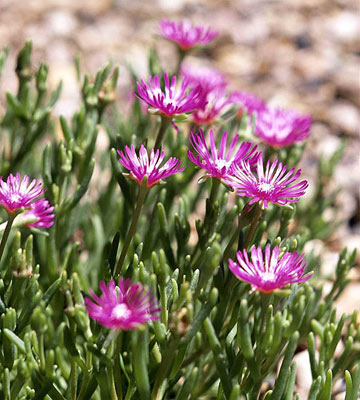
Hardy Ice Plant
This succulent groundcover has fleshy, needlelike leaves on creeping stems. In mid- to late summer it bears hot pink or yellow daisy-shape flowers.
Name: Delosperma spp.
Size: 2-8 inches tall; 12-24 inches wide
Zones: 5-10
Top Picks: Cooper’s hardy ice plant (D. cooperi) produces magenta pink blooms.
Table Mountain hardy ice plant (D. cooperi ‘John Profitt’) is hardier than the species.
Sutherland’s hardy ice plant (D. sutherlandii) has three-sided fleshy leaves, and purplish pink blooms.
- Read more about hardy ice plant.
-
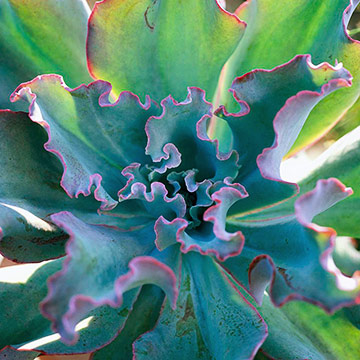
Echeveria
Echeveria is a rosette-forming succulent that adapts well to trough gardens. Numerous species and varieties are available. Most have bluish green foliage, but some are flushed with red or purple.
Name:Echeveria spp.
Size: 2-5 inches tall; 2-12 inches wide
Zones: 9-10
Top Picks: Elegant echeveria (E. elegans) has silvery-green cupped leaves in a rosette up to 10 inches wide.
E. ‘Perle von Nurnberg’ has pinkish-purple fleshy leaves in a rosette up to 10 inches across.
E. prolifica forms miniature 1- to 2-inch-wide rosettes tightly packed together, creating a groundcover effect.
E. shaviana has undulating silvery leaves in a rosette 6 inches in diameter.
-
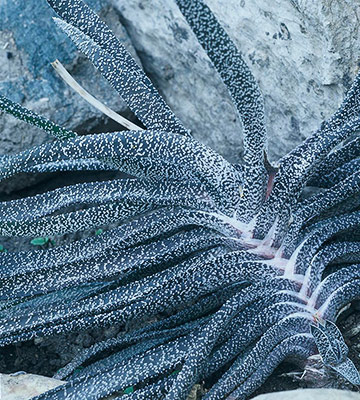
Ox Tongue
Ox tongues are named for the rough white tubercles (spots) on their leaves that resemble the rough texture of a cow’s tongue. They are closely related to aloes, which they resemble with their thick, fleshy leaves.
Name: Gasteria spp.
Size: 2-6 inches tall and wide
Zones: 9-10
Top Picks: Ox tongue (G. verrucosa) has 6-inch-long gray-green leaves heavily dotted with white bumps. It’s sometimes called warty aloe.
Dwarf ox tongue (G. liliputana) is a smaller version of ox tongue, reaching only 2 to 3 inches tall.
-
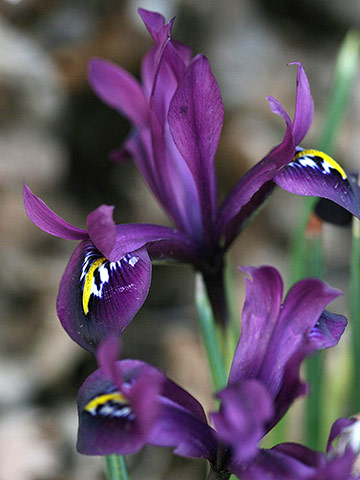
Iris
Dwarf bulbous irises are well suited to trough gardens. They bloom in late winter or early spring with yellow, white, or purple flowers. Their foliage fades away in summer, so plant them with a creeping groundcover that will fill the space after they die back.
Name: Iris spp.
Size: 4-6 inches tall; 4-6 inches wide
Zones: Zones 5-8
Top Picks: Danford iris (I. danfordiae) has clear yellow flowers 2 inches in diameter.
Reticulate iris (I. reticulata) bears fragrant purple, blue, or white blooms with yellow blotches.
‘Harmony’ offers deep blue flowers.
‘Purple Gem’ is a popular purple-blooming variety.
- Read about other irises.
-
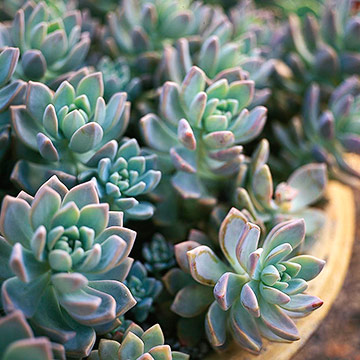
Graptoveria
An hybrid between ghost plant (Graptopetalum spp.) and echeveria, graptoveria combines the best qualities of both. This succulent has thick, fleshy leaves that form an elongated rosette, usually with multiple stems. Foliage colors range from blue-green to gray-green with pink or purplish overtones.
Name: xGraptoveria spp.
Size: 2-8 inches tall and wide
Zones: 9-10
Top Picks: A Grim One graptoveria (xG. ‘A Grim One’) has lovely silvery pink rosettes tipped in pink.
Tricolor graptoveria (xG. ‘Tricolor’) has thick leaves with colors ranging from silver through pink and purple.
-
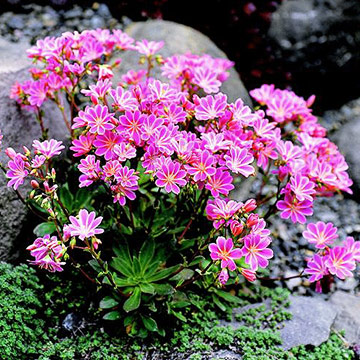
Lewisia
These natives of the American West flower in late spring to early summer with pink, rose, salmon, white, cream, or orange blooms that are often distinctively striped. They don’t tolerate moisture around their crowns, so mulch with gravel to promote drying.
Name: Lewisia spp.
Size: 6-12 inches tall; 8-16 inches wide
Zones: 4-8
Top Picks: Cotyledon Hybrids lewisia (L. cotyledon) is a northern California species that readily hybridizes, creating a wide range of colors and plant forms.
Bitterroot (L. rediviva) bears solitary pink or white blooms.
-
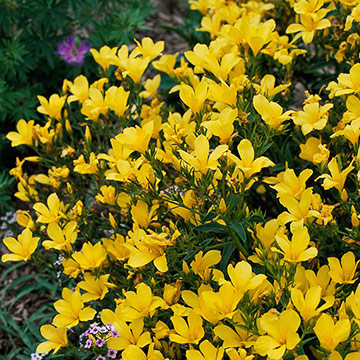
Yellow Flax
Yellow flax, also known as golden flax, bears upward-facing yellow flowers on deep green foliage throughout the summer. It is closely related to perennial blue flax, from which linen is made.
Name: Linum flavum
Size: 6-12 inches tall and wide
Zones: 5-7
Top Picks: Compactum yellow flax (L. flavum ‘Compactum’) is the best choice for a trough garden because it grows only 6 inches tall.
- Read about other flaxes.
-
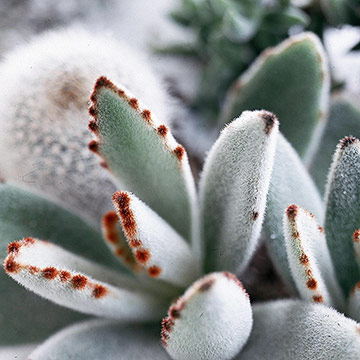
Panda Plant
Panda plant is grown for its fuzzy silvery gray leaves tipped with reddish-brown hairs. It is an easy-care succulent that needs bright light and little moisture to thrive. Other common names for it include pussy ears and plush plant.
Name: Kalanchoe tomentosa
Size: 6-24 inches tall and wide
Zones: 10-11
- Learn more about other kalanchoes.
-
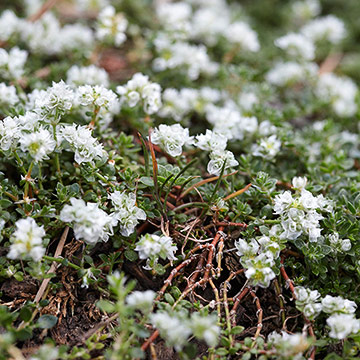
Silver Nailwort
Silver nailwort is a Mediterranean native that likes hot, dry conditions. It blooms much of the summer, bearing silver papery bracts that almost cover the creeping plants. It is an excellent, tough-as-nails groundcover with similar landscape uses as thyme.
Name: Paronychia kapela subsp. serpyllifolia
Size: 1 inch tall; 6-24 inches wide
Zones: 8-10
-
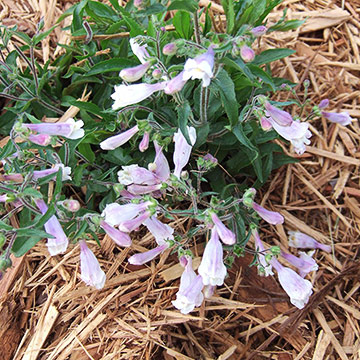
Beardtongue
Low-growing beardtongues are wonderful additions to trough gardens. Their tubular flowers in shades of blue, purple, white, red, or pink attract hummingbirds. They tend to be short-lived perennials, especially if not given excellent drainage.
Name: Penstemon spp.
Size: 4-16 inches tall; 6-16 inches wide
Zones: 4-9
Top Picks: Dwarf hairy penstemon (P. hirsutus var. pygmaeus) is a spreading groundcover with fuzzy gray-green leaves and soft lavender flowers flushed with white.
Foothills penstemon (P. heterophyllus) has bright blue or purple flowers on compact plants.
Pineleaf penstemon (P. pinifolius) has needlelike foliage and bears tubular red-orange flowers.
- Read about other beardtongues.
-
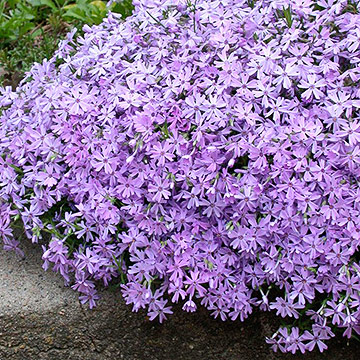
Creeping Phlox
Creeping phlox is a low, mounding plant with stiff, deep green, needlelike leaves smothered with pink, purple, red, or white blooms in spring. Foliage remains evergreen in most areas.
Name: Phlox subulata
Size: 2-6 inches tall; 20 inches wide
Zones: 3-8
Top Picks: ‘Candy Stripe’ has bicolored pink and white flowers.
‘Red Wings’ has rosy red flowers with dark red centers.
‘Emerald Blue’ has lavender-blue blooms.
‘May Snow’ has pure-white flowers.
- Learn more about other types of phlox.
-
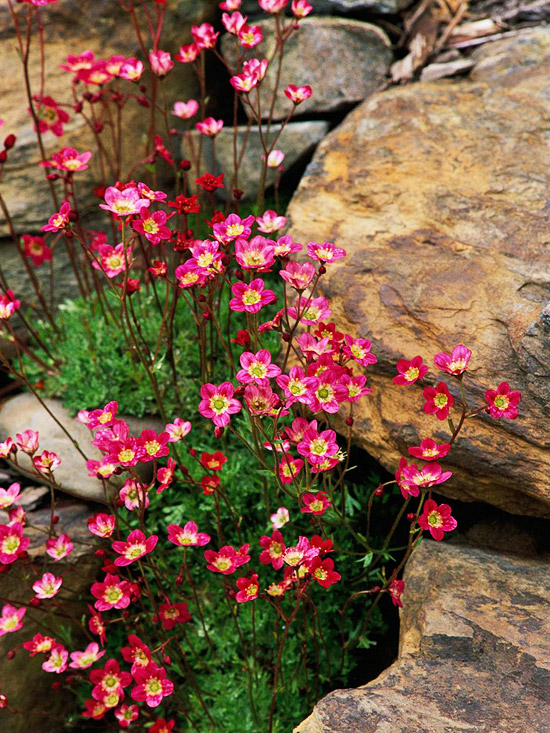
Saxifrage
Saxifrages are one of the backbone plants of trough gardening. Most are compact plants of mountain origin. Many form rosettes and bear white or pink flowers, although some types produce yellow blooms.
Name: Saxifraga spp.
Size: 1-8 inches tall; 4-8 inches wide
Zones: 1-8
Top Picks: Snail saxifrage (S. cochlearis) forms a dense cushion with spoon-shape leaves and white blooms in late spring or early summer.
S. burseriana has narrow lance-shape gray-green leaves and bears white cup-shape flowers in early spring.
Purple mountain saxifrage (S. oppositifolia) develops reddish-purple, pink, or white flowers in early summer on a creeping plant that reaches only 1 inch tall.
-
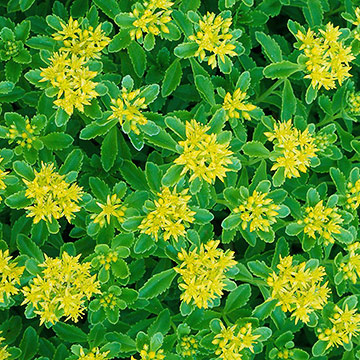
Sedum
Creeping sedums adapt well to trough gardens. Also known as stonecrops, they form mats of succulent leaves, which may be green, red, purple, gray-green, or variegated. Flowers may be yellow or pink.
Name: Sedum spp.
Size: 2-6 inches tall; 4-12 inches wide
Zones: 4-9
Top Picks: Kamchatka sedum (S. kamtschaticum) is a mounding plant to 4 inches tall. It bears yellow flowers that change to gold then reddish brown with age.
S. lydium is a mat-forming evergreen groundcover with tightly clustered, rounded, reddish leaves.
Cape Blanco sedum (S. spathulifolium ‘Cape Blanco’) has spoon-shaped silvery leaves and star-shaped yellow flowers.
- Read more about sedum.
-
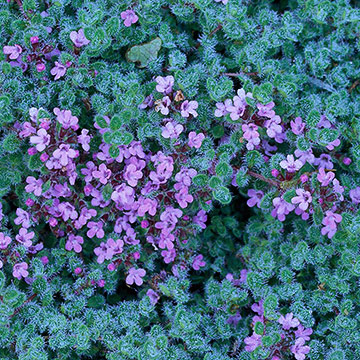
Thyme
Thyme is a tough herbal groundcover that works well in trough gardens. Choose compact forms that won’t overwhelm other plants in the trough. Most bloom in spring or summer with lavender or pink flowers.
Name: Thymus spp.
Size: 2-6 inches tall; 4-18 inches wide
Zones: 4-9
Top Picks: Woolly thyme (T. pseudolanuginosus) grows only 1 inch tall, but spreads wide, with fuzzy silvery foliage.
Minimus mother of thyme (T. serpyllum ‘Minimus’) forms compact mounds to 2 inches tall with pink flowers. flowers in early spring.
Cilician thyme (T. cilicicus) offers lilac
- Learn more about thyme.
-
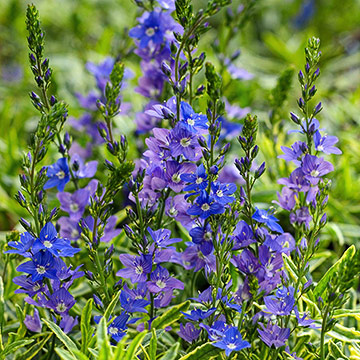
Speedwell
Low, spreading forms of speedwell are well suited to grow in trough gardens. They are attractive groundcovers with purple, blue, or white flowers in spring or summer.
Name: Veronica spp.
Size: 2-6 inches tall; 4-18 inches wide
Zones: 4-8
Top Picks: Goldwell prostrate speedwell (V. prostrata ‘Goldwell’) has variegated green-and-gold foliage with purplish-blue flower spikes in spring.
Heavenly Blue prostrate speedwell (V. prostrata ‘Heavenly Blue’) bears brilliant blue flowers in spring.
Gentian speedwell (V. gentianoides) has cup-shape pale blue flowers in spring.
- Read about other speedwells.
-
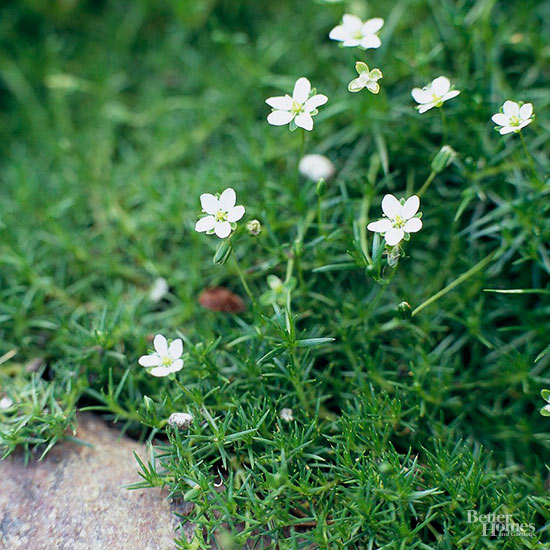
Pearlwort
Pearlwort has either deep green or chartreuse needlelike foliage. The deep green form is often called Irish moss, and the yellowish version is known as Scotch moss. Both make excellent trough garden plants, providing an attractive groundcover with delicate white blooms.
Name: Sagina subulata
Size: 1 inch tall; 4-8 inches wide
Zones: 4-8
Top Picks: Irish moss thrives in rocky, well-drained soil. It has slender green leaves on a mat-forming plant with solitary white flowers.
Scotch moss (S. subulata ‘Aurea’) is similar except its leaves are yellow green.
- Read more about pearlwort.
-

SOURCE:http://www.bhg.com/gardening/container/basics/best-plants-for-trough-gardens/